[ad_1]
If you Google “how to attract a podcast audience,” you’ll get served with a dizzying array of articles promising anywhere between 11 – 199 ways of promoting a new podcast. 😲
In most cases, the person searching for and reading these articles will be an independent podcaster who is typically writing, recording, editing, and promoting their own podcasts.
With so many tasks and responsibilities associated with starting and growing a show, we know your time is limited. In this article, we’ll show you how to use three proven ways to promote your podcast that are both time and cost- effective.
Before We Get Started …
It might seem like we’re jumping the gun by talking about promotion before discussing the importance of creating great episodes.
Time and again, listeners have reminded us that content reigns supreme for them. While promotion is important, without the product being airtight, it’s a moot point.
Here is some essential reading to make sure you’ve got your podcasting basics covered:
- If you haven’t already, check out our guide to How to Start a Podcast. From equipment to editing, it details what you need to set your podcast up for success. Especially if you think you’re not quite at the stage where you’re ready to promote yet, we’d recommend checking that guide out and coming back here.
- Take 9 minutes to read Nick Hilton’s Podcast Viability Checklist. Both new podcasters as well as those that find their audience stagnating can benefit from this checklist that covers hosting, production, and everything in between.
- Speaking of podcasters that might want to optimize an existing show, Evo Terra touches on the Easy Way to Make a Great Podcast. By plotting tasks on a 2×2 quality vs effort grid, Evo showcases how making a good quality podcast should be easy.

Consider Your Mindset
In conversations with independent podcasters, the topic of mindset comes up frequently.
So why is your mindset so important? 🤔
Because your mindset controls your attitude, and your attitude will directly influence the volume and quality of work that you do.
Some podcasters look at all the tasks associated with growing a podcast and immediately feel overwhelmed.
Here are two ways to avoid that:
1. Set a goal for your podcast 🏆
A quantitative goal, or something you can measure by quantity, gives you something concrete to work towards.
Start with identifying what growth implies to you. Is it more downloads, more followers on social media, etc.? From there, make it more specific by putting actual numbers next to your goals.
For instance: if your goal is getting more listeners make it more specific by adding parameters to it. Answer these questions:
- How many listeners do I have now?
- How many listeners do I want to reach?
- In what time frame do I want to accomplish this goal?
2. Set aside time to work ⏱️
Before you can block time off on your calendar, you’ll need to understand just how much time you have to work on your show.
Before blocking off time, start by figuring out how much time you actually have to spend on your podcast. From there, set aside time that’s just for tasks related to promoting and growing your show.
Step 1 – Categorize Your Week
A week consists of routine tasks such as eating, sleeping, working out, etc. Start by categorizing what your week consists of. Think of a typical day and what it entails. If you’re working a job apart from podcasting, don’t forget to include time spent on that!
Since routine tasks are likely applicable to most of us, here are some recuring podcasting tasks to get you going:
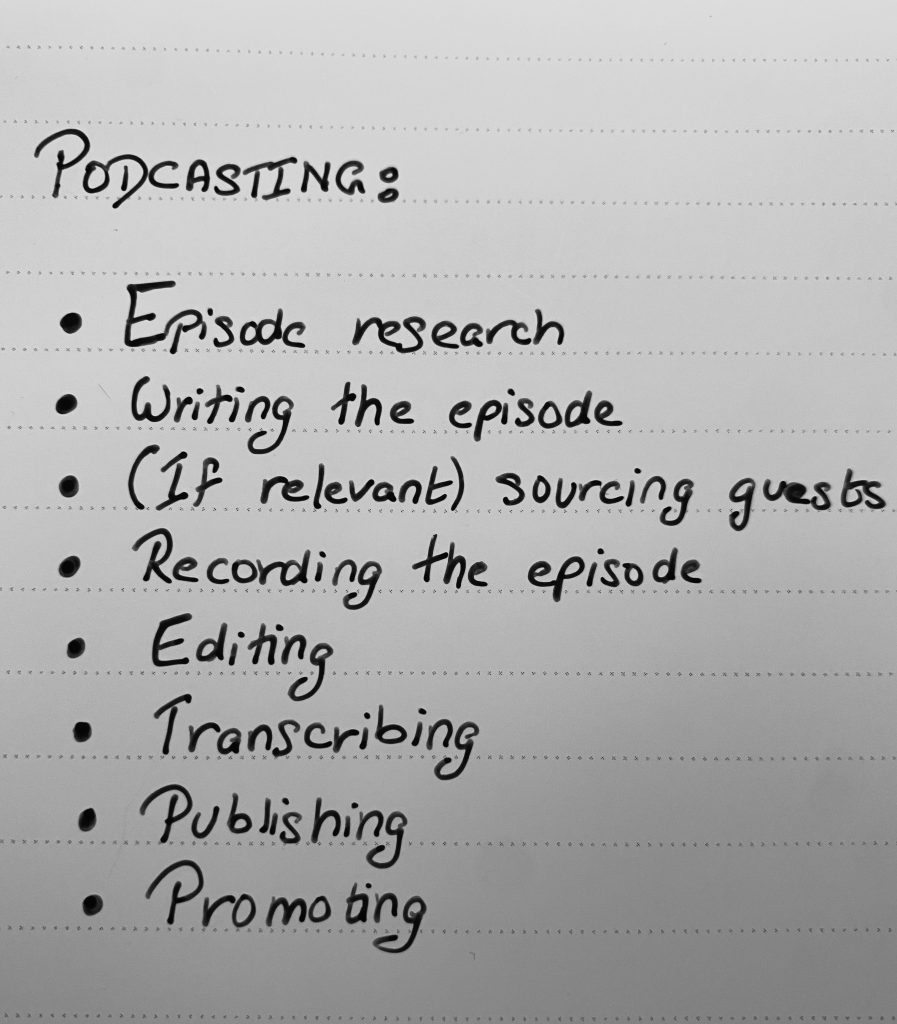
Toggl is a great (and free) tool for time measurement. After you sign up, you can measure time spent on podcasting activities on Toggl by going to projects and adding a new project called Podcasting.
Now, you can measure the time spent on different podcasting sub-categories on the main page. If you forget to measure time as you’re working on the task, you can also add time later using the manual mode.
How much time should you spend promoting?
We spoke to a few indie podcasters who operate as one-person podcasting teams. They were awesome enough to do the exercise above and actually measure how many hours on a weekly basis they spend on podcasting.
(Thank you Alexandra Cohl of “The PodBroads” and Em of “Verbal Diaroma.”)
They usually spend about 10-15 hours on podcast creation – including writing, editing, transcribing, and distribution. A general thumb-rule is to spend as much time promoting as you are creating.
Time spent promoting =Time spent creating
So if you are spending 15 hours per week creating, you’d ideally spend 15 hours per week promoting.
If you’re a part-time podcaster or release episodes on a fortnightly basis, the time you’re able to might be less for you and that’s okay! Just as long as you do the time measurement exercise above you can determine how many hours you should aim to spend on podcast promotion.
Since weekly podcasting in the US sits at about 80M, we’ll talk weekly here. To keep it inclusive and easy to adapt, we’ll be dividing time by percentage. For instance, when we say 10%, that can imply 10% of 15 hours or 5. As long as it’s not 10% of 0, you’re good.
Let’s get into the three promotional priorities and how much of your time you should be spending on each.

Time recommended – 50% of your promo time.
At the Podcast Movement conference this year, Edison Research’s SVP Tom Webster shared that podcast creators need to focus on the recommendability of their podcasts. Edison’s Podcast Consumer Tracking Report showed that 23% listeners discover new shows by recommendations from friends and family.
This is the Pareto principle of podcasting; 80% of your promotion will be done by 20% of your listeners. We recommend spending the majority of your time finding who your raving fans are and learning more about the value your podcast gives them. It’s worth finding out who this 20% is and what matters to them. Those are the people who will recommend your show and that’s the value you want to zero in on.
Start by surveying your existing listeners using this free Edison survey template. It doesn’t matter if you have 5 or 500 listeners, this is the place to start. If you find you have no raving fans, it’s time to create them. In order to do that, you’ll need to know what your listeners think of your show. The Episodes and Elements section in the survey will tell you that.
Folks who are just starting out, we have not forgotten you! You too need to do your market research by sharing a sample on Reddit or Twitter. Read on to find which subreddits to hang out on and which Twitter accounts to engage with. Once your market research is done and the podcast launched, you begin surveying too.
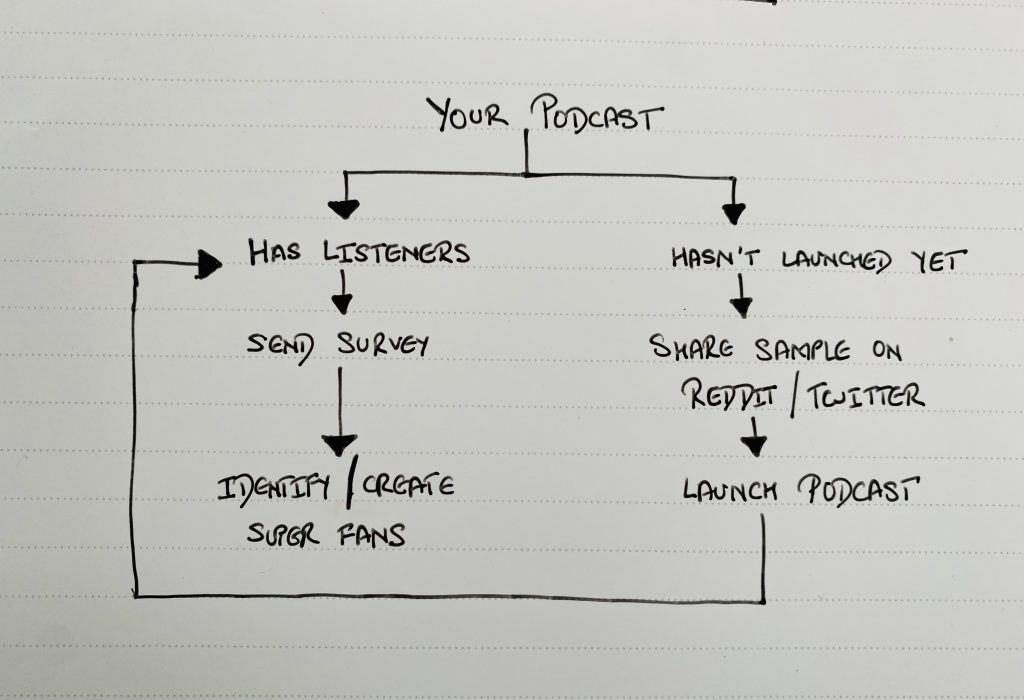
Surveying doesn’t stop once you’ve identified and/or created your raving fans; get listener feedback on a regular basis.
As for how many raving fans you need, host of “Darknet Diaries” Jack Rhysider shares, it takes about 150 super fans to get your podcast to spread by itself.
Time Spent – 30% of your promo time.
Now that the word-of-mouth advertising bit is covered, you can look to other targeted podcasting promotions. You’ve got to be where your audience is.
Here’s where podcast recommendation newsletters come in:
Podcasts listeners subscribe to these newsletters and use them to find new shows to listen to.
However, these newsletters receive multiple pitches a day from podcasters looking for more exposure, so you’ll need to stand out.
Below is an example of a pitch sent by Alexandra Cohl of “The Pod Broads,” which got her featured in Podnews, a leading industry newsletter with over 20K subscribers.
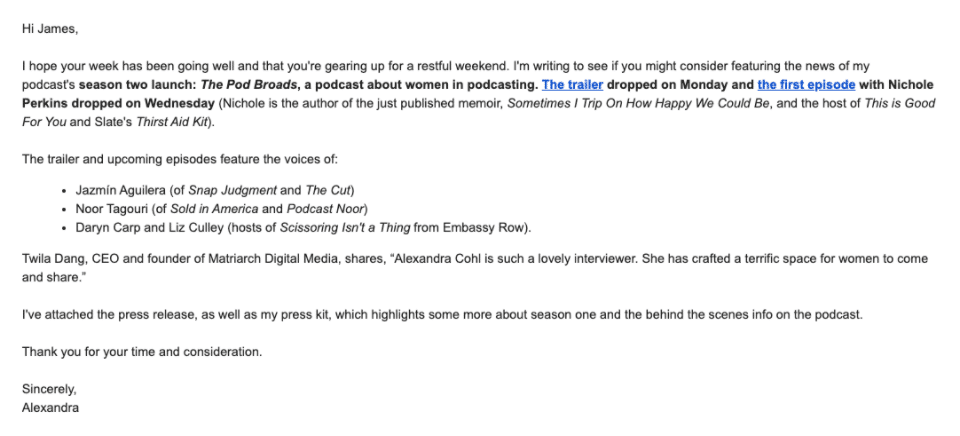
Here are some helpful tips to help you craft an effective pitch.
- Always send your pitches as a reply to their latest issue. Writers love receiving responses to their newsletters; they are more likely to open your pitch if you send it within a reply. Moreover, this shows them that you’re actually reading their newsletters and care about what they write.
- State what your podcast is about and why they should care about it. Link your show’s purpose to a past playlist or podcast feature they might have done. For instance, the Earbuds Podcast Collective features five podcast episodes according to a theme, every week. When pitching to them, include a suggested theme that your show can be a part of. Go a step further by attaching it to a relevant news article or current event.
- Send all assets in your initial pitch. If the newsletter decides to include your podcast in an upcoming issue, you want to make it easy for them. Include potential descriptions, cover art of various sizes, social media handles, and other outreach material.
- Do NOT go the cookie cutter route. These writers read pitches on a daily basis; they’ll know if you haven’t put in the time to understand their audience and why you’re a good fit. Don’t turn them off by showing a lack of effort.
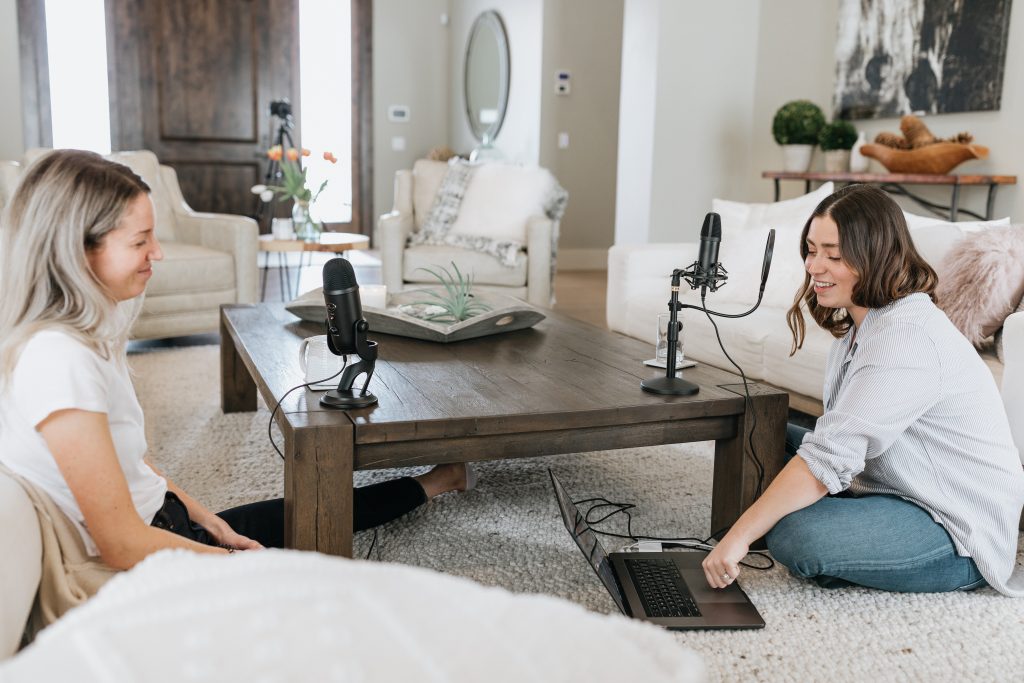
Time Spent – 20% of your promo time.
After you cover your bases with listeners and prospective listeners, connect with your community on social media. Independent creators on social media (Reddit and Twitter especially) are open to communicating and talking.
There are two important reasons to network with the community.
Firstly, your podcast audience is out there listening to shows these podcasters create. By engaging in cross-promos and trailer swaps with podcasts that have an adjacent audience, you can attract more listeners for your show.
For instance, your podcast is a deep dive into Zodiac signs and astrology. An adjacent audience for your show might be listening to shows like “What’s Your Sign?” and “Tarot Bytes.” A trailer swap with these shows is likely to grow your listenership. Remember that most independent creators are pressed for either time or money or both. They’ll likely be welcoming to working with you.
This brings us to our second reason. Our conversations with indie creators tell us that not only do they get an audience via networking, they also look to this community to find answers. Who better to understand your struggles and issues than a fellow podcaster. Besides, you never know what you may receive if you don’t ask, right?
Some of you might be thinking – ”well that’s all well and good but where do I begin? Where do I find these podcasters?” We’ve got you covered:
1. Google (no, really) – start by googling podcasts on topics that are either similar or adjacent to yours. For instance, if you’re creating a Table-Top Role Playing Game podcast, you could try “independent TTRPG podcasts,” “independent audio fiction dramas,” or “independent horror podcasts.” From there, you find their email address or socials and send your custom pitch!
2. Reddit – check out these subreddits where podcasters (and listeners) hang out:
- r/podcast – This is a community that provides resources and advice for creators of any level. They also have weekly podcast threads where you can plug your show in for both listeners and other podcasters to engage with.
- r/podcasting – This subreddit is to ask questions, solely. You can meet other podcasters through it and get feedback.
- r/podcastguestexchange – As the name suggests, this is a subreddit to match podcasts with guests. Appearing as a guest on a podcast that has a similar audience to yours is a great way to attract an audience!
3. Twitter – Twitter is a great place to find and connect with independent creators. When you Google for similar shows, look for Twitter handles on the websites. Before sending a message, start by giving them a follow and engaging with their content.
Here’s an example of a pitch sent as a Twitter DM.
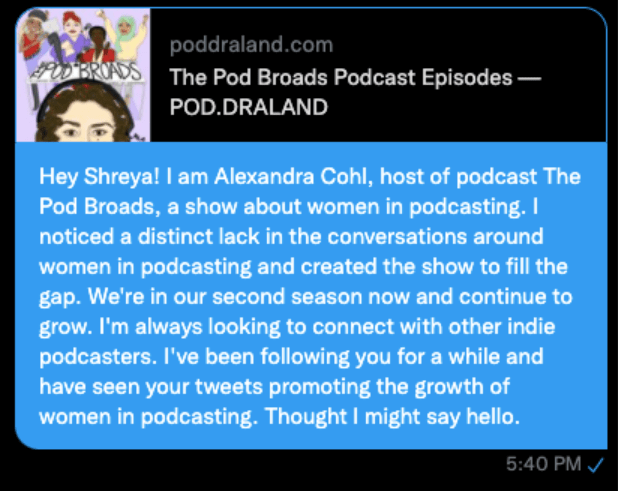
Pro-tip: Reach out to indie creators with a clearly stated purpose. Be it on Instagram, Twitter or via email, customize each pitch to the podcaster you are trying to connect with. Taking a little extra time to show them that you understand their show, audience, and purpose, can greatly increase your response rates!
Wrapping It Up 🎁
Sometimes when we consider investment in a show, we only think of money. However, time is another investment, much like your podcast gear, cover art, and a hosting platform. In fact, consider treating your time as your most important resource. Measure it, observe it, and of course, spend it wisely.
[ad_2]
Source link
